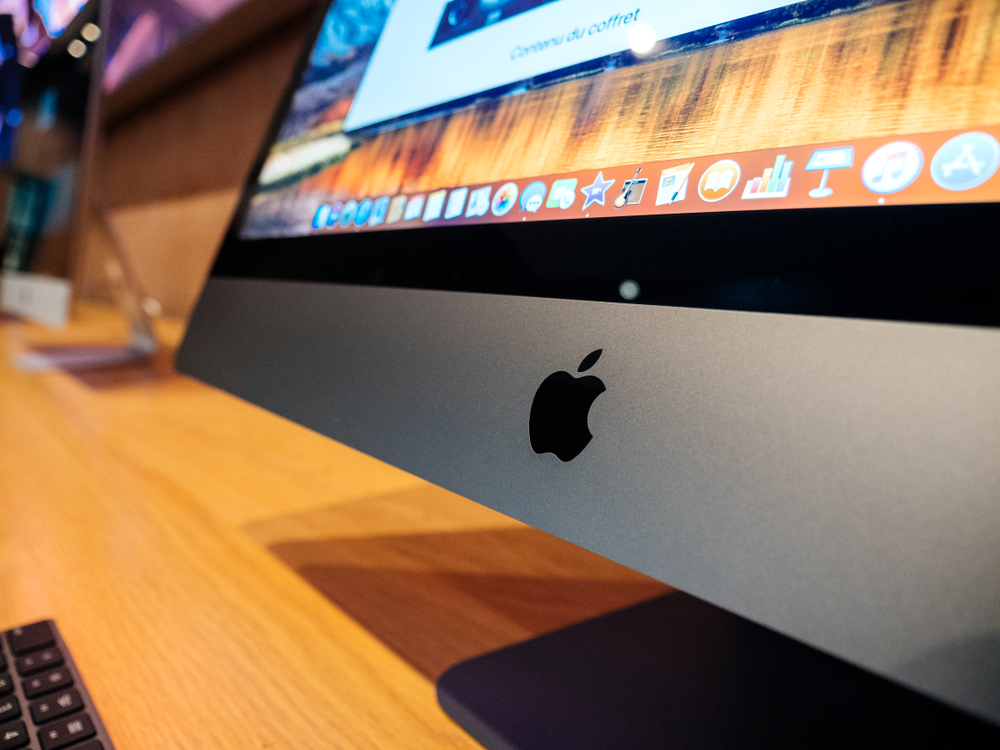When Will Apple Stop Supporting Intel Macs?
A year back, we put together an extensive list of Macs spanning over two decades, capturing their launch dates, discontinuation dates, and detailed information about the macOS updates each model received. Our aim was to shed light on two key questions: How long can Mac owners expect to receive software updates when purchasing a new computer? And were Intel Macs facing more aggressive discontinuation as the Apple Silicon transition gained momentum?

The tentative answer to the latter question was a resounding “yes,” and with the unveiling of the official support list for macOS Sonoma, the trendline becomes increasingly apparent.
Macs introduced between 2009 and 2015 enjoyed the luxury of receiving seven or eight years’ worth of macOS updates. This entailed major versions teeming with exciting features like Ventura or Sonoma, along with an additional two years of security-only updates aimed at addressing vulnerabilities and keeping Safari up to date. However, Macs released in 2016 and 2017 now only receive approximately six years’ worth of macOS updates, with the added two years dedicated solely to security updates. This represents a noticeable two-year decline compared to most Macs released between 2009 and 2013.
While the last remaining Intel Macs are still on track to receive support for a longer duration than their PowerPC predecessors in the mid-to-late 2000s, they are being granted fewer years of software update support compared to any other Mac released in the past 15 years.
In a manner similar to our analysis of Ventura, we will meticulously examine the data and delve into the potential motivations driving Apple, considering the absence of public statements or an update roadmap from the company. We will also explore the future of the remaining Intel Macs, which likely have only a year or two of macOS updates left in store.
Before delving into visual representations, let’s highlight a few essential data points. Most of these figures haven’t undergone significant changes since last year, given our extensive timescale (we’ve meticulously tracked every Mac since the original plastic iMac debuted in 1998). For those interested, you can explore my spreadsheet here, which remains accessible in read-only mode. We included some data collection notes at the end of last year’s article.
Across all tracked Mac models, the average lifespan encompasses approximately 6.6 years of macOS updates, encompassing fresh features, accompanied by an additional two years dedicated solely to security updates. The Macs from 2017 are projected to receive about 6.3 years of macOS updates, slightly falling below the historical average.
On average, a Mac continues to receive updates for about 5.5 years after Apple stops selling it. Purchasing a Mac toward the end of its life cycle results in a significantly reduced number of updates.
The three longest-living Macs are the mid-2007 15- and 17-inch MacBook Pros, the mid-2010 Mac Pro, and the mid-2007 iMac. These models enjoyed new macOS updates for approximately nine years after their introduction, coupled with security updates spanning around 11 years.
Conversely, the shortest-lived Mac remains the late 2008 version of the white MacBook. It only received 2.7 years of new macOS updates and an additional 3.3 years of security updates from its introduction. (By modern standards, the late PowerPC-era and early Intel-era Macs fare rather poorly).
Comparing these figures to last year’s data, some numbers have shifted slightly due to the disclosure of the final security update date for macOS 10.15 Catalina and the final non-security update for macOS 12 Monterey (previously estimated based on Apple’s prior behavior). We continue to rely on extrapolated dates for currently supported macOS versions, assuming that each operating system releases in October, receives non-security feature updates for approximately a year, and then receives security-only updates for about two years.
Our charts, one dedicated to macOS feature updates and the other to security-only updates, reveal a clear valley between the PowerPC and Intel eras, which coincided with a major processor architecture switch. With an additional year of data, we now observe a gradual but sustained decline as the Intel era nears its end and the Apple Silicon era takes center stage. This gradual decline becomes noticeable from the 2013-2015 models and becomes historically abnormal during the 2016/2017 model years.
Furthermore, we examined the duration of updates received after Macs are discontinued. Macs sold for an unusually long period, such as the entry-level 21.5-inch iMac available from 2017 to 2021 (which Sonoma doesn’t support), do not receive extended software updates simply because Apple sold them for a longer duration. This differs from Apple’s timeline for providing hardware repair services, which depends on “when Apple last distributed the product for sale.” Hence, it’s important to exercise caution before purchasing a nearly three-year-old M1 MacBook Air solely due to its slightly lower price compared to newer M2 models.
Having established that late-model Intel Macs receive fewer updates compared to older Intel Macs, the key question arises: Is this decline in support merely a temporary dip that will revert to the seven-or-eight-year norm once all Intel Macs are phased out? Or is it an emerging trend indicating that Apple Silicon Macs will also receive fewer years of updates moving forward? Notably, the norm for dropped iPhone models in recent releases, including the iPhone 6S from 2015 and the iPhone 8 from 2017, has been approximately six years of feature updates. Unfortunately, we won’t obtain a definitive answer until 2026 or 2027 when the first M1 Macs encounter this limitation. Given that Apple has been selling M1 Macs like the MacBook Air and iMac for quite some time, we certainly hope these systems have several years of updates ahead. Nonetheless, the data indicates that such an outcome is not guaranteed.
Let’s explore the explanations surrounding this phenomenon. It’s easy to perceive this data and conclude that Apple is pursuing a planned obsolescence strategy, which may indeed be the case. However, nuances exist, and dropping support for older hardware relatively quickly does carry certain minor benefits for users. Additionally, Apple cannot control when other companies choose to terminate support for components inside those Macs.
From Apple’s perspective, moving beyond the Intel era entirely is the most likely reason for the declining support experienced by latter-day Intel Macs. Cynically speaking, if older Macs receive fewer years of software updates, it provides customers with an additional incentive to purchase new Macs. Simultaneously, budget-conscious buyers are more likely to consider new or Apple-refurbished Macs instead of used ones.
Nevertheless, Apple’s business interests and customers’ interests do intersect to some extent. Maintaining Intel code alongside Apple Silicon code consumes time and resources, which can be saved by removing a portion of that code. Eliminating files required to support older Macs also benefits users of currently supported Macs. Removing support for multiple outdated Intel architectures in Ventura resulted in a disk space reduction of 3GB to 4.5GB on supported Apple Silicon and Intel Macs compared to those running macOS Monterey.
Furthermore, as more Intel code is removed from the operating system, users of Apple Silicon Macs will continue to reap the rewards. Eventually, more app developers will join in dropping Intel support, opting to ship apps containing solely Apple Silicon code rather than universal apps that incorporate code required for both architectures.
It’s worth noting that Intel also plays a role in this scenario, as the company is concluding support for these chips. Last year, Intel released a support document explicitly outlining its support timelines for various processor generations. Once processors reach their “End of Servicing Lifetime” (ESL), Intel ceases to provide technical support or security updates for those processors. Subsequently, after an “End of Support” (EOS) deadline, Intel removes support documentation and drivers for those processors from its website.
Intel typically adds processors to this list when they are within 12 months of their ESL date. Remarkably, Intel has generally opted to discontinue updates and support for most processors around six or seven years after their initial release. The 7th-generation “Kaby Lake” processors found in the 2017 Macs will all reach their ESL date by the end of March 2024. Even if security support for Intel chips is a consideration, Apple is proactively addressing this matter. March 2024 falls approximately six months after the presumed release date of macOS Sonoma.
From Apple’s perspective, Intel’s support translates into ongoing firmware updates and updated drivers, which bolster the Mac platform’s security while minimizing crashes, bugs, and instability. As we mentioned last year, it is technically possible to run modern operating systems on outdated firmware using old drivers. However, Apple might be unwilling to shoulder responsibility for security flaws, instability, and other issues it cannot rectify without Intel’s assistance, particularly for six-year-old systems.
Nevertheless, from a user’s standpoint, older systems with older processors remain functional even if Intel discontinues support for them.
Looking ahead, the future of these remaining Intel Macs becomes clearer as we gain more experience with three years of the Apple Silicon era and four operating system updates. While these are still speculative scenarios, we can consider three possible outcomes, ranked from most to least likely:
Scenario 1: Apple supports 2019/2020 Intel Macs in macOS 15 and discontinues Intel support in macOS 16. Reasoning: Apple’s past behavior often serves as an indicator of future decisions. In the last four macOS releases, the compatibility cutoff has been extended by approximately a year. The macOS 13 update primarily dropped support for pre-2017 Macs, the macOS 14 update omitted pre-2018 Macs, and macOS 15 may likely exclude pre-2019 Macs. (The last Intel Macs were released in early-to-mid 2020, suggesting they might be grouped with the 2019 models when Apple decides to discontinue support).
Scenario 2: Apple ends all Intel Mac support in macOS 15. Reasoning: Apple swiftly abandoned PowerPC Macs, cutting all PowerPC support with macOS 10.6 Snow Leopard, released about three years after the Intel transition concluded. The disk space savings resulting from this move were touted as a selling point. Why it might not happen: Intel Macs enjoyed significantly higher sales than their PowerPC counterparts, and abruptly ending all Intel support would leave a larger number of users in the lurch compared to the end of PowerPC support. Additionally, this would entail a swift cutoff for the 2019 and 2020 Intel Macs, providing them fewer years of software support than any Mac since the mid-2000s. Apple continued selling certain 2018 Mac minis until earlier this year, and the 2019 Mac Pro was available until a few weeks ago. Although those who purchased these Macs between late 2020 and now hopefully did so knowing that Intel Macs had an expiration date, terminating feature updates for year-old systems appears excessive, despite the promise of two years of security-only updates.
Scenario 3: Apple supports the same Intel Macs in macOS 15 and discontinues Intel support in macOS 16. Reasoning: At this stage, the remaining Intel Macs are relatively homogenous in terms of hardware speed, capabilities, and underlying architecture. Most of them include Apple T2 chips, and Intel’s CPUs during that period exhibited minimal improvements year over year. Consequently, the stagnation that prompted Apple to abandon Intel in the first place should theoretically make supporting this final batch of Intel Macs a straightforward task. Why it might not happen: The last time a new macOS release supported the same Macs as its predecessor was in 2019. Since then, each subsequent release included Macs that missed the cutoff but were very similar to fully supported models. Age, rather than hardware capability, appears to be the primary determinant when Apple establishes the cutoff point for Intel Macs.
While it remains uncertain which of these scenarios will unfold, it is evident that the end of the Intel Mac era is drawing near. Users of these older systems should brace themselves for potential software limitations in the near future, even if their hardware continues to meet daily requirements.
Regarding this matter, my expectations from Apple haven’t changed much since last year. I believe they should exercise caution, extend security updates for older versions, and communicate better and earlier about the discontinuation of support for old hardware. However, this problem isn’t unique to Apple’s systems.
Microsoft’s approach to Windows 11, at least for now, might serve as a valuable example. Officially, the company discourages upgrades on unsupported hardware, making it increasingly challenging to convince the operating system to install on older machines. However, once the operating system is successfully installed (even on “unsupported” systems, based on my experience), it runs smoothly, and installing new feature and security updates does not disrupt its functionality. While there will always be hardware that the software cannot run on due to its age, this approach could be effective for recently unsupported systems that still have some life left. (Microsoft could decide to cease releasing updates for these machines tomorrow, but the current status quo is “install Windows 11 if you insist, but be aware of the potential consequences.”)
Adapting this strategy might not be feasible for macOS. Unlike Windows, macOS is designed to run on a limited subset of specific hardware configurations, whereas Windows can run on any system adhering to PC standards. Nevertheless, I hope Apple finds a way to break free from the binary categorization of software support, creating a space that accommodates advanced and technical users as well as aging yet functional hardware that falls between the realms of “supported” and “unsupported.”



